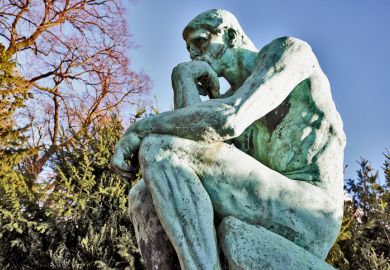The cover of the opening issue of Performance Research suggests a building and construction publication, but the crane shown demolishing a brick chimney alludes not to construction, but deconstruction. Indeed the assumptions and approaches of deconstruction and postmodernism, from which so much of the theorisation about performance art has grown, are manifest in this new journal.
The editors aim to create a "forum for ideas" in a journal that will "address the dividing lines between both visual and literary culture and between the academy and arts practice". Like Journal of Performance Studies, the aim is an eclectic mix of art, theatre, dance, theory and politics, but with the emphasis on contemporary performance in Europe. This European dimension is undoubtedly one of the journal`s strengths: practitioners and theorists from Germany, France, Poland, Romania, the former Yugoslavia and Denmark are the subject or source of articles in the first volume, and it is clear from the later "Letters from Europe" issue that it fulfils a genuine need.
Diversity of approach is a keynote: theoretical analysis rubs shoulders with statements from artists; informative reviews are set beside anecdotal material; letters and conversations abound; and all such verbal offerings are in turn interlaced by visual material, usually photographs, in the form of "prepared pages". Such a layout reflects cross-disciplinary exchange, and the editors claim that they "have placed things together to see if and how they fit". Such casual juxtapositions give the journal an innovative style but can be irritatingly arbitrary. Why "prepared pages" that throw light on the art of Rose English should be completely separated from the article itself or the two articles on the performance group Goat Island be separated by 80 pages, is unclear.
Each issue of this triannual publication is organised thematically. The opening "Temper of the times" attempts the huge task of examining the state of performance art (and hence society and politics) in Europe in the 1990s. Artists and writers, asked about the concerns in their work and how they relate to contemporary life, respond diffusely. There are some stimulating replies but others veer towards the facile or fail to answer the question. A more successful focus is created by the second issue, "On risk", where the subject (emotional, intellectual and physical risk in performance) is more manageable. Illusion is the subject of the third issue and contexts here range from metaphysical debate on reality to the art of juggling.
Semantic juggling in this journal is widespread, as in theoretical justifications of performing art (David George on "Performance epistemology") and attempts to define its aesthetic ("Baudrillard and the ambiguities of radical illusion"). The two Jacques (Derrida and Lacan) provide the intellectual backbone to such theorisations but the more pervasive influence is Artaud who, as failed practitioner and unwieldy theorist, (never quite happy with language at all), is the perfect guru figure of performance art. But new orthodoxies are dangerous too, and there are depressingly shrill polemics (the editors seek "passion") when texted drama, like the static framed painting, is condemned as the lackey of capitalism, too mainstream to be meaningful, or merely a "bastard art". The wrongful sidelining of performance in the past does not justify marginalising everything else now.
Contradictions are inevitable in such a journal. The essence of performance art is the ephemeral, the intangible, the "being present in the present", so, despite the pictures, a primarily verbal publication in itself highlights the conflict between practice and analysis. Unsurprisingly, many articles dwell on the validity and efficacy of words. Yet when a no-doubt-powerful "site-specific text" is provided as a "fictive text" full of font changes, spaces, incomplete and mis-spelt words, its paucity and pretentiousness on the inappropriate format of the printed page is apparent. However, the journal's most convincing writing captures, through an interdisciplinary approach, the essence of contemporary performances. Eleanor Margolies in her excellent essay on "La Porte" performed by Theatre Demodesastr highlights the intangibility and complexity of performance, making us wish we had been there, as do articles on Marina Abramovic and Rose English. Such well-written, informative and stimulating articles give performance art credibility.
Ian Mitchell is head of English and drama, Grantham College, Nottingham Trent University.
Performance Research (three times a year)
Editor - Richard Gough, Claire MacDonald and Ric Allsopp
ISBN - ISSN 1352 8165
Publisher - Routledge
Price - £30.00 (individuals), £88.00 (institutions)
Pages - -
Register to continue
Why register?
- Registration is free and only takes a moment
- Once registered, you can read 3 articles a month
- Sign up for our newsletter
Subscribe
Or subscribe for unlimited access to:
- Unlimited access to news, views, insights & reviews
- Digital editions
- Digital access to THE’s university and college rankings analysis
Already registered or a current subscriber? Login



